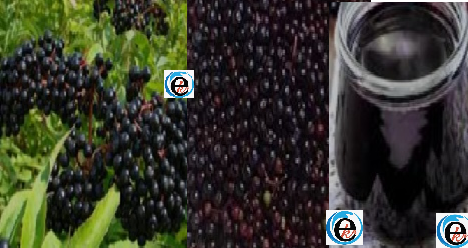How to Prepare Champagne at Home Using Elderberry Flower.

How to Prepare Champagne at Home Using Elderberry Flower
Even though this is not made from champagne grapes, like true champagne, it is vigorously fizzy.
Elderflower champagne relies on the fermentation of natural yeasts present in the flowers and is ready to drink just a few weeks after making it.
You can use fresh or dried elderflowers for this purpose.
You’ll need to use plastic water or soda bottles, or thick glass champagne-style bottles for this recipe.
Did I mention that the fermentation is vigorous? and because of that regular glass bottles could explode.
It can be kept in the refrigerator for several months.
The earlier you drink it; the more yeast taste it will have.
Wait for at least two weeks from bottling before drinking if you want it at its best.
However, the honey version takes slightly longer to ferment than the sugar version.
When the drink is ready, it should be fizzy and lightly sweet but not cloyingly so.
What do you need?
- Sugar or Honey
- Boiling non-chlorinated or filtered water
- Cold non-chlorinated or filtered water
- Apple cider vinegar or juice
- Rind of large lemons plus apple cider vinegar
How to get your champagne ready
#01
- The natural yeasts present in the elderberry flowers are responsible for the successful fermentation of this brew, so don’t wash the flower heads.
- Do shake them vigorously to dislodge and remove any insects.
#02
- Put the sugar or honey into a large bowl or ceramic crock.
- Pour in the 2 pints of boiling water.
- Stir until the sugar or honey is completely dissolved.
#03
- Stir in the 6 pints of cold water, along with the vinegar or lemon-juice-and-vinegar
- Add the lemon rind, if
- Strip the florets off of the elderberry flower clusters into the liquid
- Discard the inedible
#04
- Cover the bowl or crock with a clean dish towel.
- Let the mixture sit at room temperature for 48 hours, and stir it at least twice a
- By the second day, you should see the frothy, bubbly signs of fermentation, especially right after you stir the mixture.
- If there are no signs of fermentation after 48 hours, add a tiny pinch of wine or baking yeast and wait another 48 hours, stirring every few hours, before proceeding with the recipe.
#05
- Strain the elderflower champagne mash through a finely meshed sieve or a colander lined with several layers of cheesecloth.
#06
- Funnel the brew into clean plastic soda or water bottles with screw tops,
- Or into thick ceramic bottles with flip tops (some artisanal beers come in this type of bottle).
- Leave at least an inch of head space between the surface of the liquid and the rims of the bottles.
- Secure the tops.
#07
- Leave at room temperature for a week, “burping” (opening briefly) the bottles at least once a day.
- After the week at room temperature, move them to the refrigerator, but keep burping the bottles occasionally for another week.






